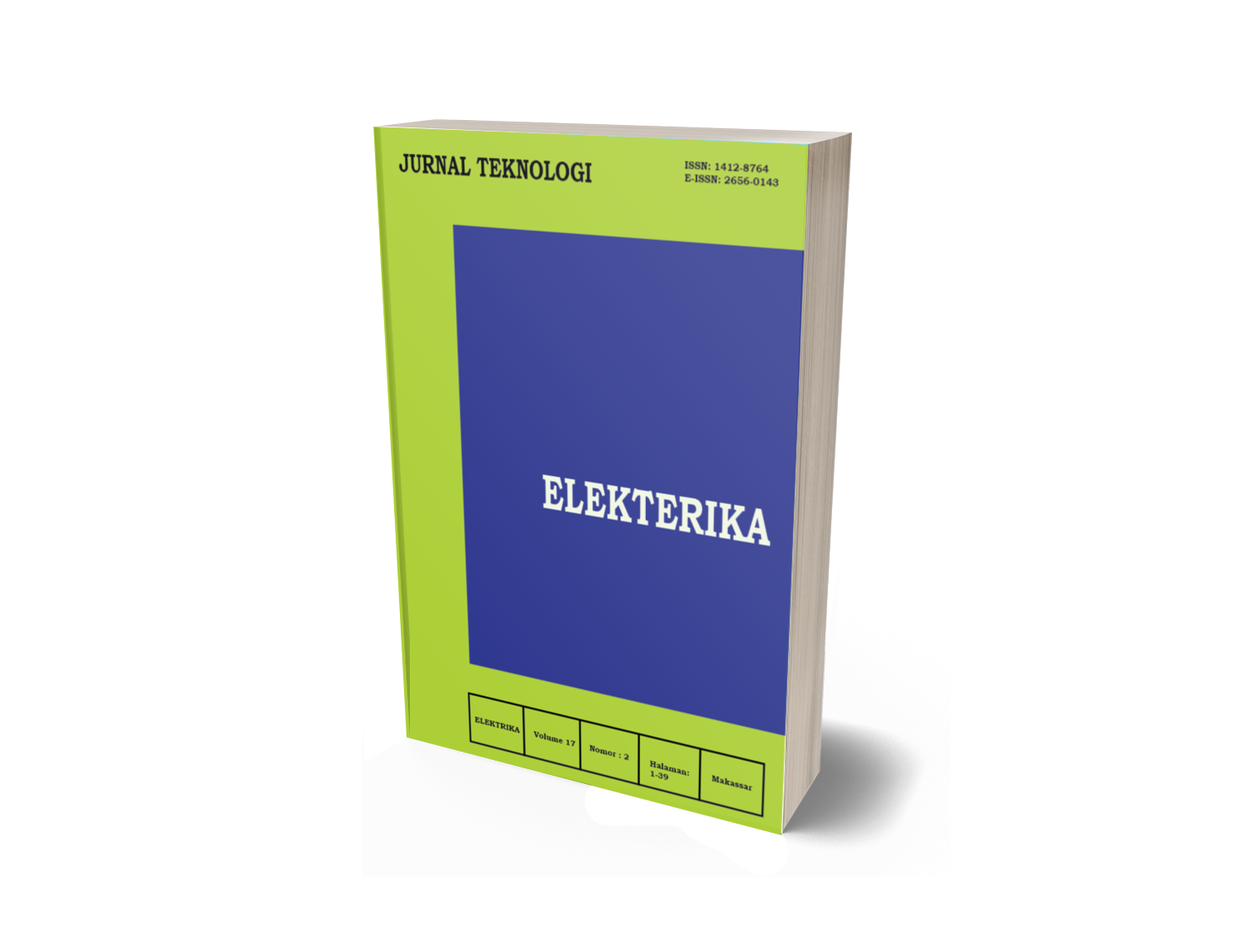Development of an Agricultural Department Application to Predict Small Chili Prices
DOI:
https://doi.org/10.31963/elekterika.v21i2.5104Keywords:
Price Prediction, Small Chili, Gradient BoostingAbstract
Small chili farmers in Soppeng Regency face challenges in planning production and marketing due to fluctuating prices. To assist various stakeholders, an accurate price prediction system is needed. This research proposes a system solution to predict small chili prices using the Gradient Boosting Algorithm. The Gradient Boosting Algorithm is employed to predict prices based on historical data using tools such as Visual Studio Code, Microsoft Excel, Python, PHP, CSS, and SQL. The dataset used consists of chili price data provided by the Department of Agriculture of Soppeng Regency, covering prices from 2018 to April 2024. The developed prediction system is capable of providing accurate price predictions, aiding farmers, traders, and consumers in production and purchasing planning. This algorithm is highly effective in predicting small chili prices and offers significant benefits to farmers, traders, and consumers in the region. The system was tested using Mean Absolute Error (MAE) and User Acceptance Testing (UAT). The results showed that the prediction error, measured using MAE, was 2730.83. Meanwhile, the User Acceptance Testing yielded a questionnaire score of 86.27%, indicating that the system has excellent performance and is highly suitable for use. It is hoped that this system will provide benefits to the entire community, especially small chili farmers, in production planning.References
[1] Yusuf, “Pejabat Dan ASN Soppeng yang Tidak Tanam Cabe Akan Diberi Sanksi,” republiknews.co.id, 2022. https://republiknews.co.id/pejabat-dan-asn-soppeng-yang-tidak-tanam-cabe-akan-diberi-sanksi/
[2] C. Bentéjac, A. Csörgő, and G. Martínez-Muñoz, “A comparative analysis of gradient boosting algorithms,” Artif. Intell. Rev., vol. 54, pp. 1937–1967, 2021.
[3] M. N. Amin, “Predicting Price of Daily Commodities using Machine Learning,” 2020 Int. Conf. Innov. Intell. Informatics, Comput. Technol. 3ICT 2020, no. November, 2020, doi: 10.1109/3ICT51146.2020.9312012.
[4] A. Rahman, M. N. Y. Utomo, and I. K. Yusri, “Penerapan Metode Profile Matching untuk Seleksi Penerima Bantuan Usaha Mikro, Kecil dan Menengah pada Dinas Kopurindag Kabupaten Maros,” J. Ilm. Ecosyst., vol. 24, no. 1, pp. 161–172, 2024, doi: 10.35965/eco.v24i1.3927.
[5] R. M. Nabi, S. Soran Ab M, and H. Harron, “A novel approach for stock price prediction using gradient boosting machine with feature engineering (gbm-wfe),” Kurdistan J. Appl. Res., vol. 5, no. 1, pp. 28–48, 2020.
[6] G. M. Kale, “Cabai Rawit NTB,” Berk. Ilm. Pertan., vol. 1, no. 1, pp. 1–9, 2020, [Online]. Available: http//www.bps.go.id
[7] W. O. Zalmawati, M. N. Y. Utomo, and R. Nur, “Sistem Pendukung Keputusan Berbasis Metode Korelasi untuk Menganalisis Penyebab Tidak Tercapainya Target Produksi Batu Bara di PT XYZ,” Semin. Nas. Tek. Elektro dan Inform., pp. 152–157, 2022, [Online]. Available: https://www.researchgate.net/publication/368756053
[8] I. Wardhana, Musi Ariawijaya, Vandri Ahmad Isnaini, and Rahmi Putri Wirman, “Gradient Boosting Machine, Random Forest dan Light GBM untuk Klasifikasi Kacang Kering,” J. RESTI (Rekayasa Sist. dan Teknol. Informasi), vol. 6, no. 1, pp. 92–99, 2022, doi: 10.29207/resti.v6i1.3682.
[9] A. M. Husein, F. R. Lubis, and M. K. Harahap, “Analisis Prediktif untuk Keputusan Bisnis: Peramalan Penjualan,” Data Sci. Indones., vol. 1, no. 1, pp. 32–40, 2021.
[10] S. J. Juanda, M. Nur, Y. Utomo, and Z. Saharuna, “Aplikasi Penentuan Kualitas Jagung Menggunakan Algoritma Convolutional Neural Network,” pp. 83–87, 2023.
[11] A. Kisma, M. N. Y. Utomo, and E. Tungadi, “Analisis Sentimen Vaksinasi Di Indonesia Menggunakan Optimized-Svm,” Pros. 6th Semin. Nas. Penelit. Pengabdi. Kpd. Masy., pp. 57–62, 2022.
[12] A. D. Sidik and A. Ansawarman, “Prediksi Jumlah Kendaraan Bermotor Menggunakan Machine Learning,” Formosa J. Multidiscip. Res., vol. 1, no. 3, pp. 559–568, 2022, doi: 10.55927/fjmr.v1i3.745.
[13] M. F. Idris, “Pertumbuhan Dan Produksi Tanaman Cabai Rawit Lokal Varietas Tampaning Secara Organik,” 2023.
[14] Kareba Soppeng, “Bupati Soppeng Resmi Melaunching Gerakan Tanam Pangan Panen Cepat melalui Sejuta Bibit Cabai Tampaning,” 2022. https://soppeng.go.id/kareba_soppeng/bupati-soppeng-resmi-melaunching-gerakan-tanam-pangan-panen-cepat-melalui-sejuta-bibit-cabai-tampaning/
[15] H. Supriadi and W. K. Sejati, “Perdagangan antarpulau komoditas cabai di Indonesia: Dinamika produksi dan stabilitas harga,” Anal. Kebijak. Pertan., vol. 16, no. 2, pp. 109–127, 2018.
[16] C. J. Willmott and K. Matsuura, “Advantages of the mean absolute error (MAE) over the root mean square error (RMSE) in assessing average model performance,” Clim. Res., vol. 30, no. 1, pp. 79–82, 2005, doi: 10.3354/cr030079.
Downloads
Published
Issue
Section
License

This work is licensed under a Creative Commons Attribution-ShareAlike 4.0 International License.










